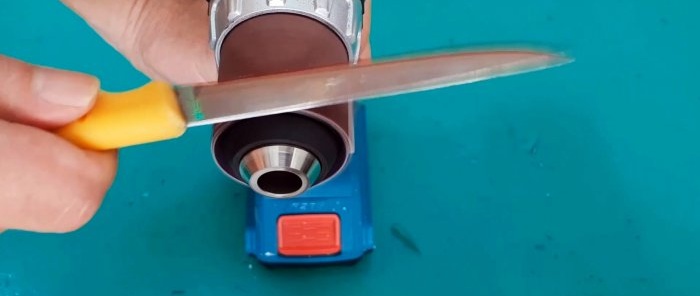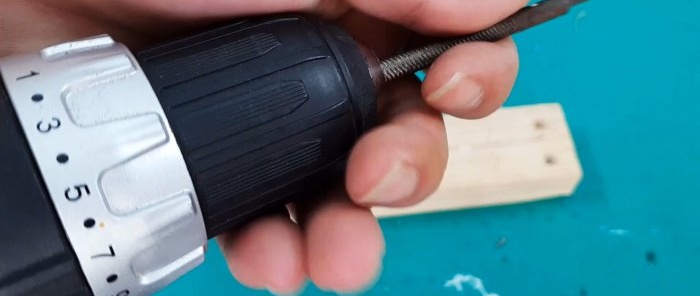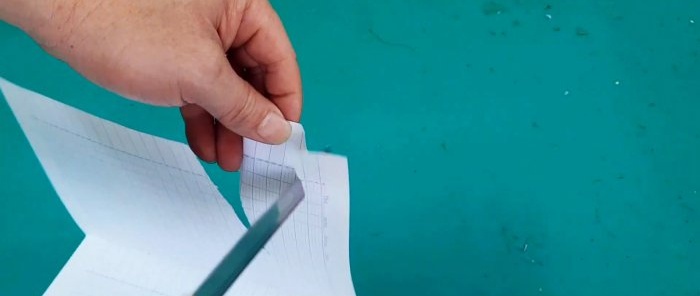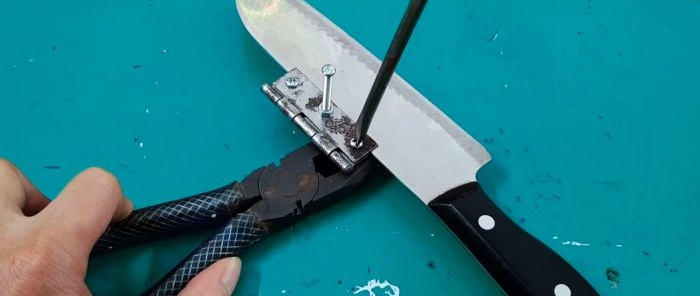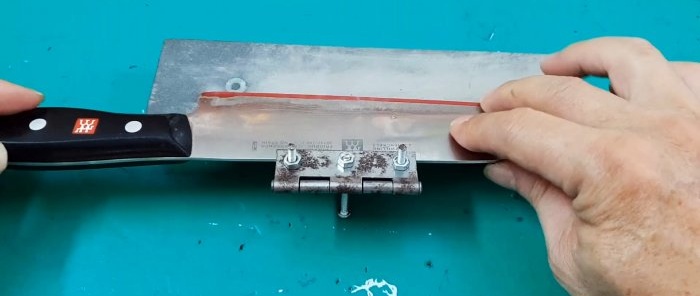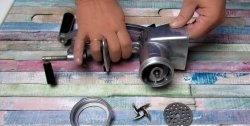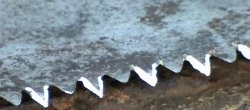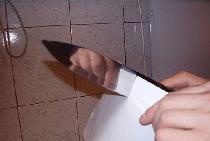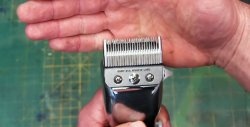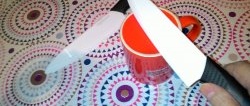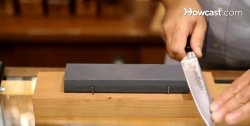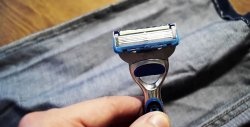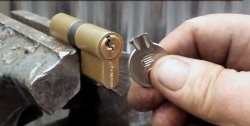Not everyone has a good whetstone that can quickly sharpen knives. And to use it, you need the appropriate skills. But you can sharpen knives to razor sharpness with much more affordable means - sandpaper, a file. Let's look at working alternative sharpening methods that are available to everyone.
Method 1. Sharpening on a screwdriver chuck
This is a very quick and easy way to sharpen. You need to cut a strip from a sheet of sandpaper and glue it with hot glue to the keyless chuck of a drill or screwdriver.
Then we start the instrument and sharpen the blade on an improvised drum.
If you do not have sharpening experience, you can paint over the cutting edge with a felt-tip pen, this will make it easier to control the uniformity of metal removal.
Method 2. Sharpening with emery discs
You can also cut two circles with a diameter of 40-50 mm from sandpaper.
A hole is made in their center. Then the discs, turned against each other with abrasive, are put on the bolt. Washers are placed on the sides of them, and they are compressed with a nut.
The resulting device is clamped into a drill.To sharpen, place the knife with its cutting edge between the discs and turn on the tool.
Thus, the metal is removed from both sides simultaneously.
Method 3. Sharpening with a file
You can also clamp a regular round file into the chuck of a drill or screwdriver and sharpen the knife on it. This results in fairly fast, rough metal removal.
This method is best suited when the knife is very dull and you need to correct its slopes, but it is also suitable for simple straightening.
Method 4. Sharpening at the same angle with the jig
To sharpen a knife strictly at one angle, you can assemble a simple jig from a door hinge. To do this, its doors need to be tightened with two bolts through the standard outer holes. A long bolt is installed through the central hole. A knife blade is clamped between the halves of the loop.
Then the knife on the jig is applied to the sharpening stone.
The angle is adjusted by extending the long bolt.
After this, we move the knife, resting the head of the bolt on the table. Sharpening this way turns out to be slower, but the actual sharpness of the knife will be much higher than with previous methods.



